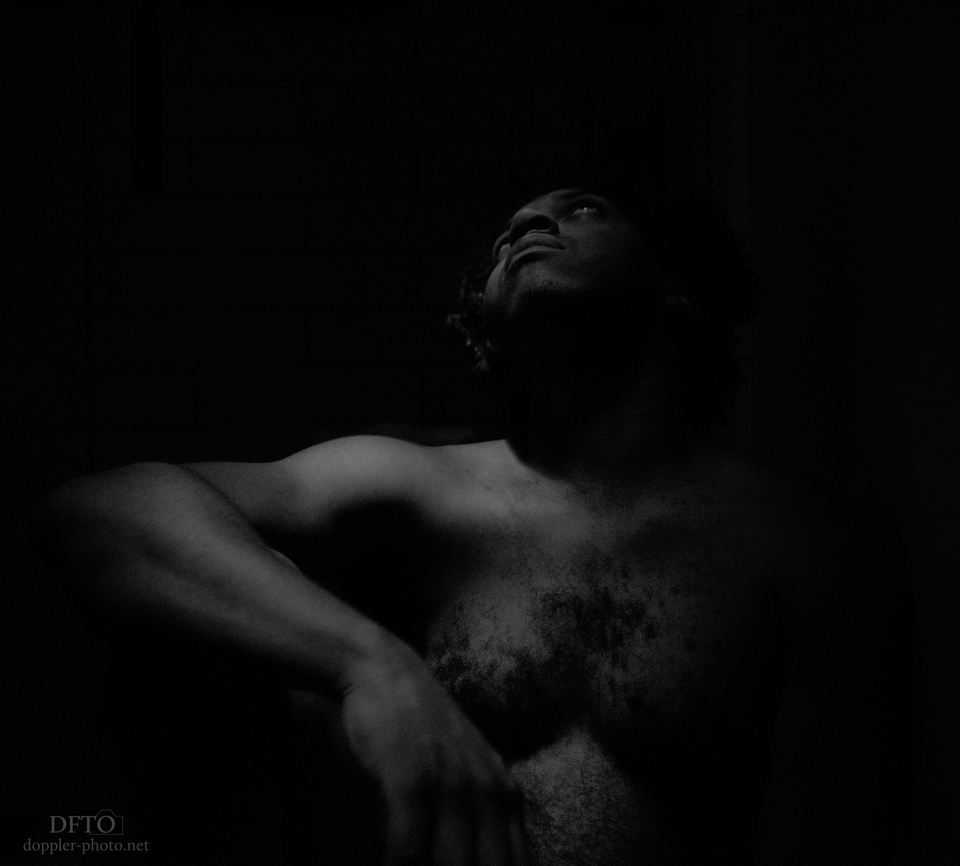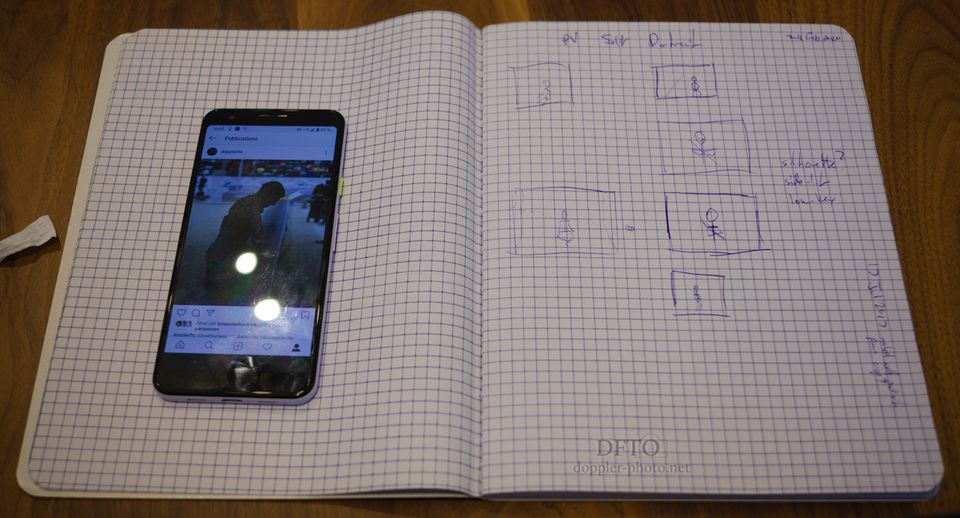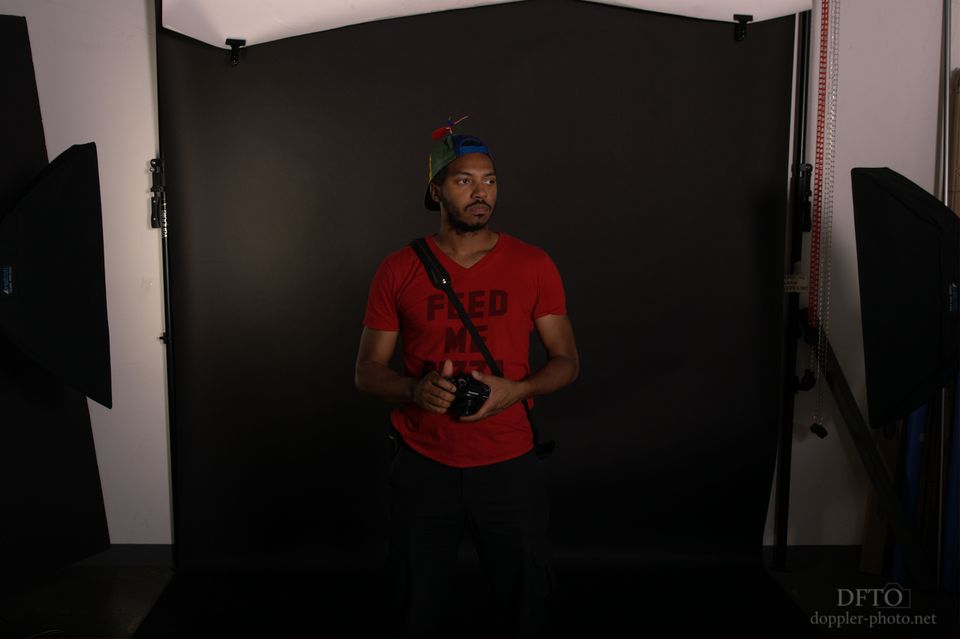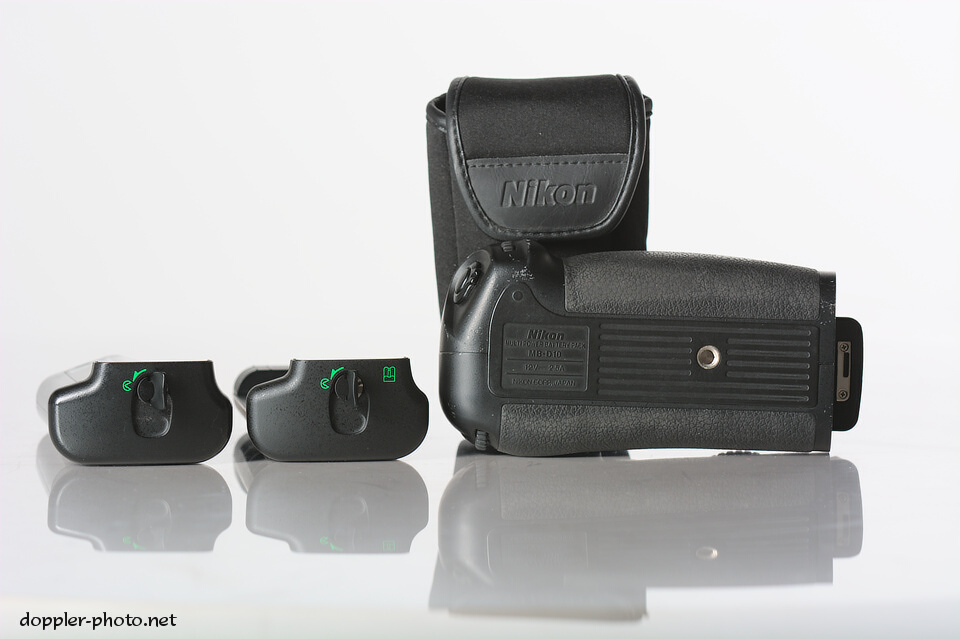
Recently, I embarked on an effort to sell all of the gear that's been gathering dust in my closet. Everyone loves pictures, so my first step was to photograph all of the equipment. I'm pretty pleased with how well everything turned out, especially given how little effort I put into the whole shoot. Here are some things that went well, and some other things that I can improve next time around.
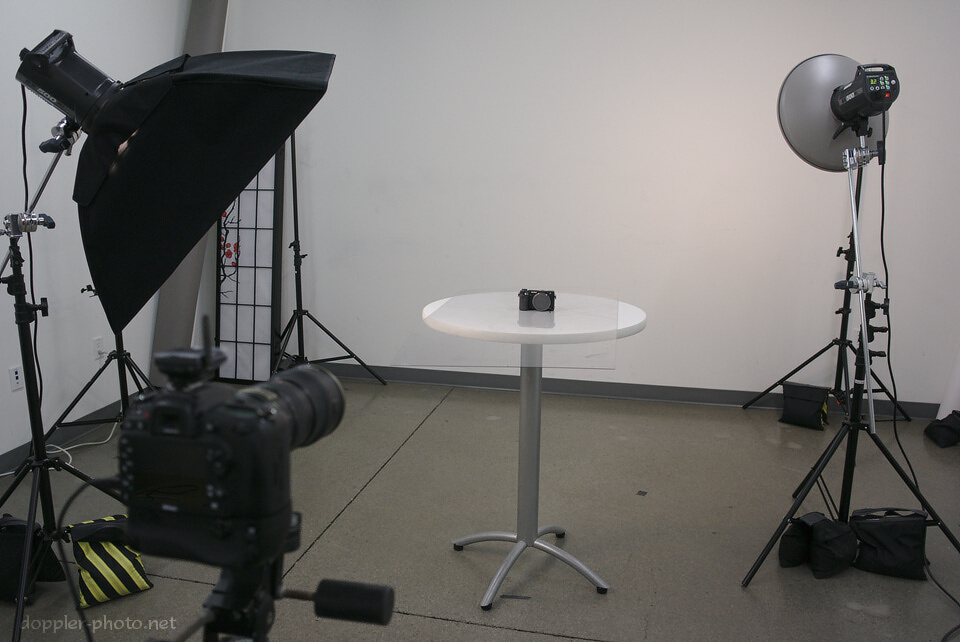
This was my general setup. Lights are a pair of Elinchrom BX 500 Ri monolights. I've got a beauty dish on the one to camera right, blowing out the background wall, and also giving some ambient fill and a nice rim-light effect. And I've got a second one at camera left with a strip box mounted at some cockamamie angle.
I specifically went for the strip box because while I definitely needed some diffusion, I also wanted the light to be hard enough to elucidate the texture of the equipment. I wanted to make it easier for a person to look at the image and imagine what it would be like to hold each piece in his/her hands.
As you can see, I got the reflections by just tossing a dirty piece of plexi onto a table and putting the gear on top of that. I shot pretty long, generally in the 120mm (180mm-equiv) to 200mm (300mm-equiv) range, and I believe my subject distance was around 10 feet. The subject was around 6 feet in front of the distant wall. Mistakes
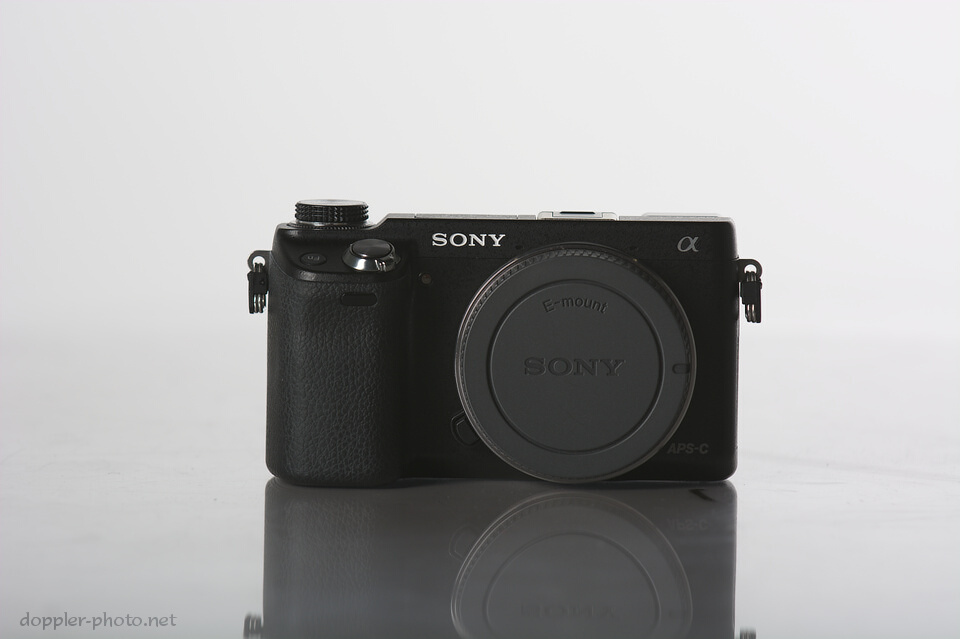
Just to keep things easy, let's make a list:
- I started off with the key light about a stop too low, so the detail of the body was difficult to see. You can see how this image looks really back-lit compared to the shot above.
- Lazy is good, too lazy is bad. I didn't really clean anything (lazy!), and it generally didn't make much of a difference (yay!). But failing to even wipe off the surface of the plexi was too lazy. You can clearly see a whiteboard-marker mark near the lower-right corner of the camera.
- You can't (directly) see it, but I wasn't able to lock down the rotation of my lens in its tripod-foot collar, which led to the rotation drifting any time I touched the camera. Keeping everything exactly the same (as much as possible) is the easiest way to cut down time in the studio, and time applying custom adjustments to each and every image during post-processing.
- Along the same vein, I should have marked the center of the frame on the plexi. This would've made it easy to keep the framing and magnification the same as I moved from piece to piece.
Successes
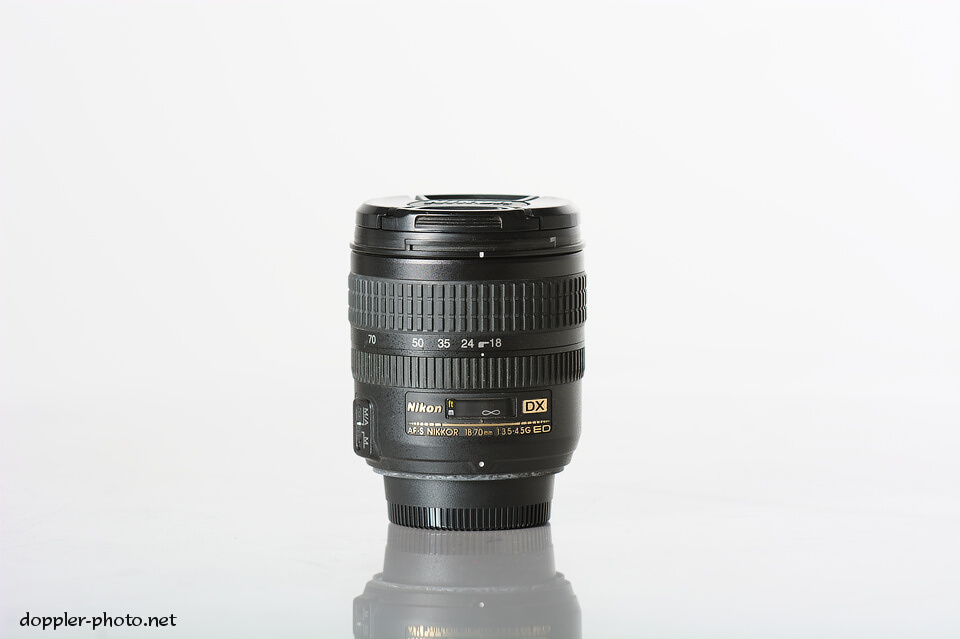
Thankfully, enough things went right that things worked out in the end. A couple examples:
- Stayed focused. I had a good idea of the things I needed to get right, and the things that wouldn't make a big difference. In particular, I didn't want to spend a ton of time on images that I'll likely never use again.
- Brought a backup body. For some reason, my first body wasn't triggering the strobes, and if I didn't have a backup, the evening would've been wasted.
- Shot long. I ended up at f/7.1 and 250s most of the time, which is right around peak sharpness for this lens/body. It also gave me plenty of magnification without having to get the camera really close to the subject. The ~10ft throw also gave me some reasonable DoF.
- Picked a reasonable lighting design. I basically just threw some stuff together, given my prior studio experiments. The beauty dish hitting the back of the room turned out to be a really great idea. You can see how the rim light wraps around the right side of the lens in the picture. The level of diffusion on the key light was pretty good as well. Plenty of directionality, and depth and texture, but nothing too harsh.
- Fixed things as early as possible. This meant that by the time I got home, I just picked the ones that didn't suck and pretty much auto-processed them all. I didn't do any cropping (too lazy), and only fixed rotation in a few cases (too lazy). So yeah, that's that. Hit me up if you've got any questions.



